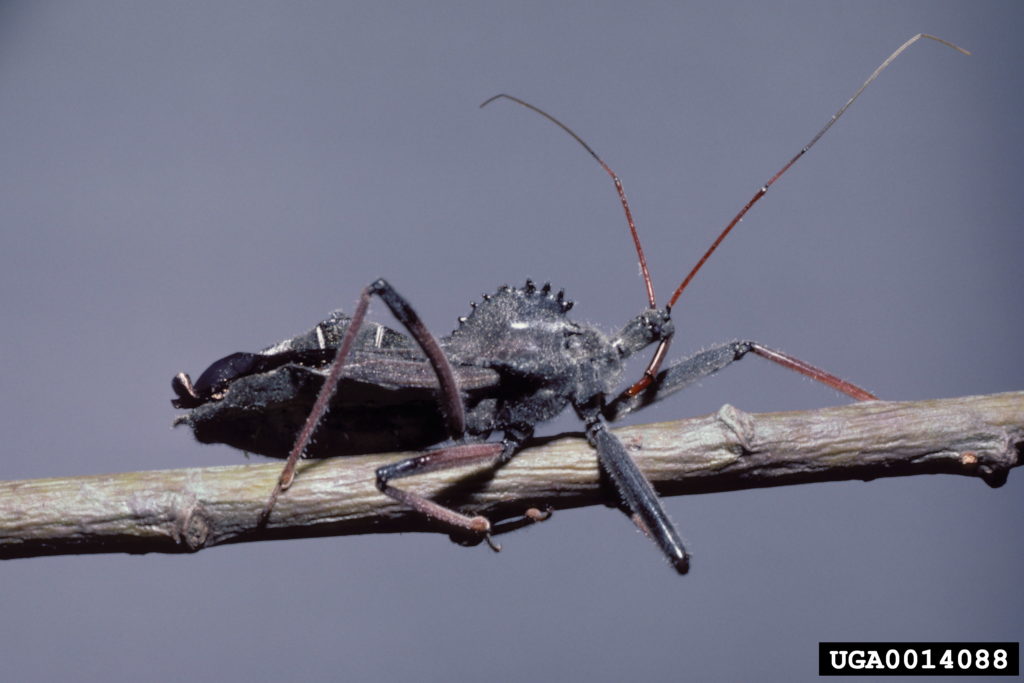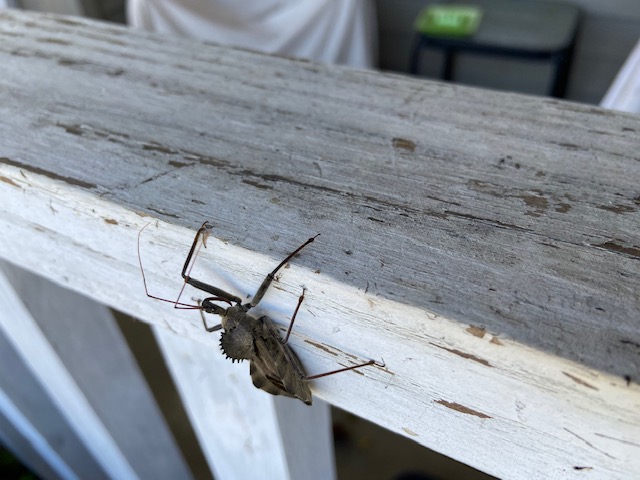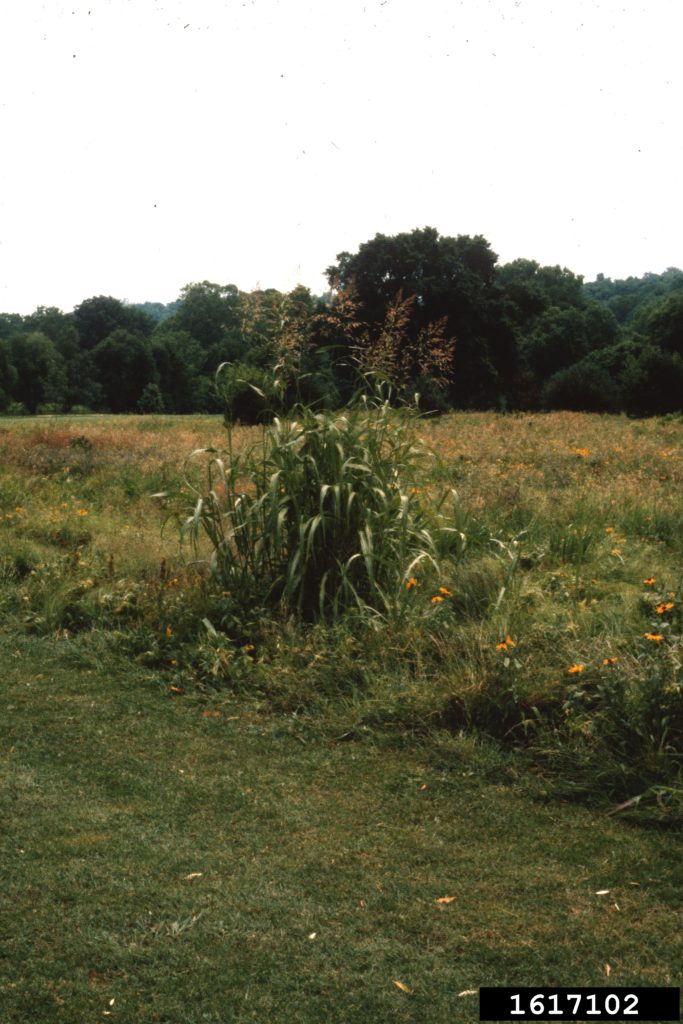Wheelbugs, Fall Landscaping, and Johnsongrass Info
go.ncsu.edu/readext?635250
en Español / em Português
El inglés es el idioma de control de esta página. En la medida en que haya algún conflicto entre la traducción al inglés y la traducción, el inglés prevalece.
Al hacer clic en el enlace de traducción se activa un servicio de traducción gratuito para convertir la página al español. Al igual que con cualquier traducción por Internet, la conversión no es sensible al contexto y puede que no traduzca el texto en su significado original. NC State Extension no garantiza la exactitud del texto traducido. Por favor, tenga en cuenta que algunas aplicaciones y/o servicios pueden no funcionar como se espera cuando se traducen.
Português
Inglês é o idioma de controle desta página. Na medida que haja algum conflito entre o texto original em Inglês e a tradução, o Inglês prevalece.
Ao clicar no link de tradução, um serviço gratuito de tradução será ativado para converter a página para o Português. Como em qualquer tradução pela internet, a conversão não é sensivel ao contexto e pode não ocorrer a tradução para o significado orginal. O serviço de Extensão da Carolina do Norte (NC State Extension) não garante a exatidão do texto traduzido. Por favor, observe que algumas funções ou serviços podem não funcionar como esperado após a tradução.
English
English is the controlling language of this page. To the extent there is any conflict between the English text and the translation, English controls.
Clicking on the translation link activates a free translation service to convert the page to Spanish. As with any Internet translation, the conversion is not context-sensitive and may not translate the text to its original meaning. NC State Extension does not guarantee the accuracy of the translated text. Please note that some applications and/or services may not function as expected when translated.
Collapse ▲I want to share a few questions that were asked recently at the N.C. Cooperative Extension, Caldwell County Center. I hope you find these questions and answers helpful. If you have specific questions not answered here, visit our website or feel free to reach out to me and my team at the Caldwell County office.
Question: What kind of bug is this fellow?

The wheel bug is named for the cog-like gear on its back. This is a beneficial insect that feeds on landscape and garden pests. (Credit Lucy Lowe)

Credit Gerald J. Lenhard, Louisiana State University, Bugwood
Answer: This is an adult wheel bug, Arilus cristatus (Linnaeus). It is a moderately common insect in Caldwell County. This is a type of beneficial assassin bug. It preys on pest insects. Don’t try to pick it up. Its bite can be more severe than a bee sting.
The wheel bug is the largest of the 150 or so species of assassin bugs in North America. Adult wheel bugs are gray and approximately 1 ¼ inches long. Its name comes from the distinctive, cog-like crest on the top of the thorax, or middle section, of the wheel bug’s body. Wheel bugs will attack large insects like grasshoppers and larger caterpillars.
There is some anecdotal evidence that wheel bugs feed on brown marmorated stink bugs (BMSB). Wheel bugs have been found in crop fields where BMSB have reached high levels.
Because wheel bugs are predatory insects and are beneficial for the garden, control is not recommended. Assassin bugs, including wheel bugs, do not require insecticidal sprays.
Question: I want to re-do part of my landscape. Is it too early to plant shrubs or should I wait until spring?
Answer: Fall is the ideal time for planting evergreens, conifers, and deciduous plants. The cool weather permits the establishment of a root system before next year’s hot weather. If several shrubs are to be planted, till the entire bed area, adding an organic amendment, such as compost or ground pine bark, to improve drainage.
Fall is also the ideal time to relocate plants in the landscape. In selecting sites, be certain to allow space for the plant at maturity. A common mistake is placing a large or fast-growing plant where there is not enough room. This error results in continuous pruning.
When transplanting, there are two options. The plant can be dug and the soil left attached, or the soil can be knocked off the roots to make the plant bare rooted. There are pros and cons to each method. Whichever you choose, be sure there are no air pockets around the roots, and water if we get less than 1 inch of rain per week this winter.
Question: What is prussic acid?
Answer: Prussic acid, cyanide, or hydrocyanic acid are all terms relating to the same toxic substance. Hydrogen cyanide was first isolated from a blue dye (Prussian blue), and because of its acidic nature, it became known by the common name “prussic acid”. Cyanide is one of the most rapidly acting toxins that affect grazing livestock.
Some plants contain compounds called “cyanogenic glycosides”. These compounds can be converted to free cyanide when the plant is damaged. The problem occurs when plant cells are crushed, chewed, wilted, frozen, chopped, or otherwise ruptured. The crushed cells allow the cyanogenic glycosides and enzymes within the cells to come together. This reaction forms cyanide gas. When the damaged plant material is consumed by animals, the cyanide is rapidly absorbed into the bloodstream.
Cyanide interferes with the blood’s ability to transport oxygen. Symptoms of poisoning are rapid, labored breathing, irregular pulse, frothing at the mouth, dilated pupils, muscle tremors, and staggering. The mucous membranes are bright red in color due to oxygen saturation of the
hemoglobin.
Animals typically die within 5 to 15 minutes after consuming a lethal dose of cyanide. If animals survive for at least 60 minutes, they likely will make a full recovery. If prussic acid poisoning is suspected, remove the animals from the field as rapidly as possible.
Sorghum, sorghum crosses, and johnsongrass are the forage plants associated with this problem. Wild cherry trees can also be a problem when limbs or trees are damaged after a storm.

A clump of johnsongrass growing in a meadow is enough to cause concern of prussic acid poisoning in the fall. (Credit Doug Doohan, Ohio State University/ OARDC, Bugwood)
For answers to your agriculture questions, call the N.C. Cooperative Extension, Caldwell County Center at 828-757-1290 or visit us online anytime.




